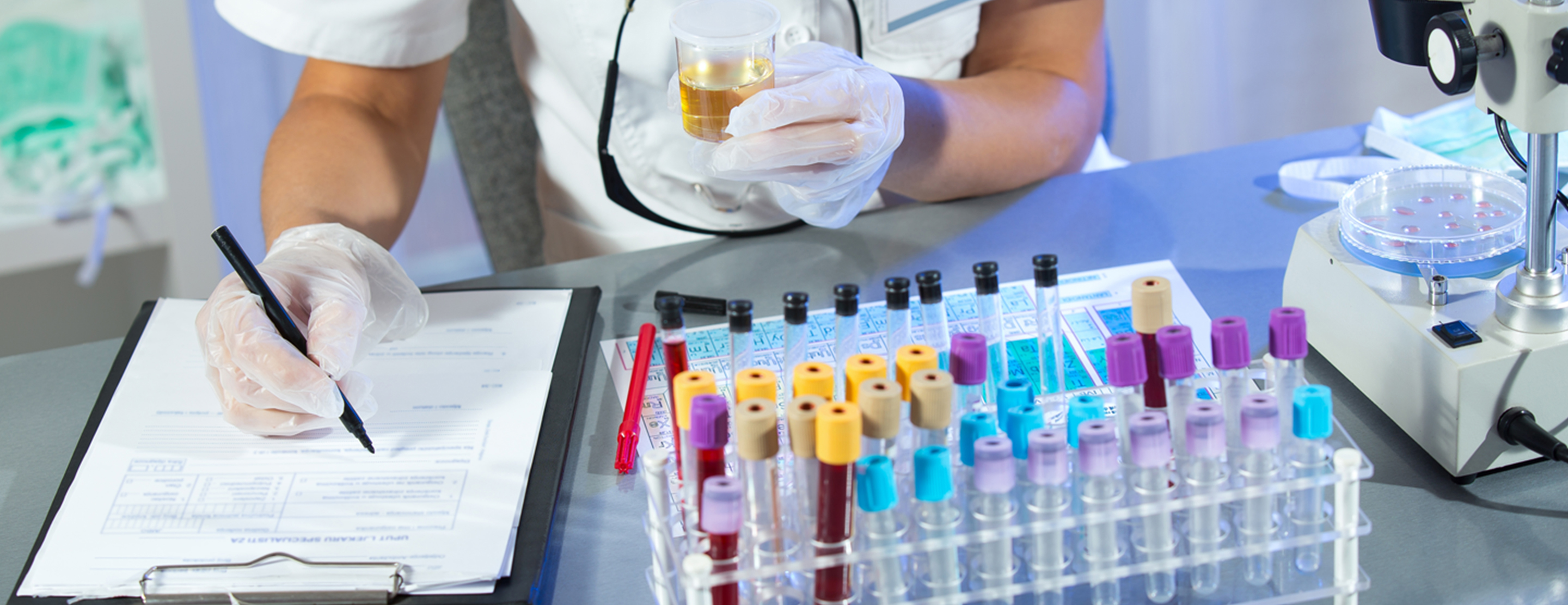
Clean catch urine sample
Definition
A clean catch is a method of collecting a urine sample to be tested. The clean-catch urine method is used to prevent germs from the penis or vagina from getting into a urine sample.
Alternative Names
Urine culture - clean catch; Urinalysis - clean catch; Clean catch urine specimen; Urine collection - clean catch; UTI - clean catch; Urinary tract infection - clean catch; Cystitis - clean catch
How the Test is Performed
If possible, collect the sample when urine has been in your bladder for 2 to 3 hours.
You will use a special kit to collect the urine. It will most likely have a cup with a lid and wipes.
Wash your hands with soap and warm water.
GIRLS AND WOMEN
Girls and women need to wash the area between the vagina "lips" (labia). You may be given a special clean-catch kit that contains sterile wipes.
- Sit on the toilet with your legs spread apart. Use two fingers to spread open your labia.
- Use the first wipe to clean the inner folds of the labia. Wipe from the front to the back.
- Use a second wipe to clean over the opening where urine comes out (urethra), just above the opening of the vagina.
To collect the urine sample:
- Keeping your labia spread open, urinate a small amount into the toilet bowl, then stop the flow of urine.
- Hold the urine cup a few inches (or a few centimeters) from the urethra and urinate until the cup is about half full.
- You may finish urinating into the toilet bowl.
BOYS AND MEN
Clean the head of the penis with a sterile wipe. If you are not circumcised, you will need to pull back (retract) the foreskin first.
- Urinate a small amount into the toilet bowl, and then stop the flow of urine.
- Then collect a sample of urine into the clean or sterile cup, until it is half full.
- You may finish urinating into the toilet bowl.
INFANTS
You will be given a special bag to collect the urine. It will be a plastic bag with a sticky strip on one end, made to fit over your baby's genital area.
If the collection is being taken from an infant, you may need extra collection bags.
Wash the area well with soap and water, and dry. Open and place the bag on your infant.
- For boys, the entire penis can be placed in the bag.
- For girls, place the bag over the labia.
You can put on a diaper over the bag.
Check the baby often and remove the bag after the urine collects in it. Active infants may displace the bag, so you may need to make more than one attempt. Drain the urine into the container you were given and return it to the health care provider as directed.
AFTER COLLECTING THE SAMPLE
Screw the lid tightly on the cup. Do not touch the inside of the cup or the lid.
- Return the sample to the provider.
- If you are at home, place the cup in a plastic bag and put the bag in the refrigerator until you take it to the lab or your provider's office.
References
Germann CA, Holmes JA. Selected urologic disorders. In: Walls RM, Hockberger RS, Gausche-Hill M. Rosen's Emergency Medicine: Concepts and Clinical Practice. 9th ed. Philadelphia, PA: Elsevier; 2018:chap 89.
Nicolle LE, Norrby SR. Approach to the patient with urinary tract infection. In: Goldman L, Schafer AI, eds. Goldman-Cecil Medicine. 25th ed. Philadelphia, PA: Elsevier Saunders; 2016:chap 284.
Review Date: 06/28/2018
The information provided herein should not be used during any medical emergency or for the diagnosis or treatment of any medical condition. A licensed physician should be consulted for diagnosis and treatment of any and all medical conditions. Call 911 for all medical emergencies. Links to other sites are provided for information only -- they do not constitute endorsements of those other sites. Copyright ©2019 A.D.A.M., Inc., as modified by University of California San Francisco. Any duplication or distribution of the information contained herein is strictly prohibited.
Information developed by A.D.A.M., Inc. regarding tests and test results may not directly correspond with information provided by UCSF Health. Please discuss with your doctor any questions or concerns you may have.





